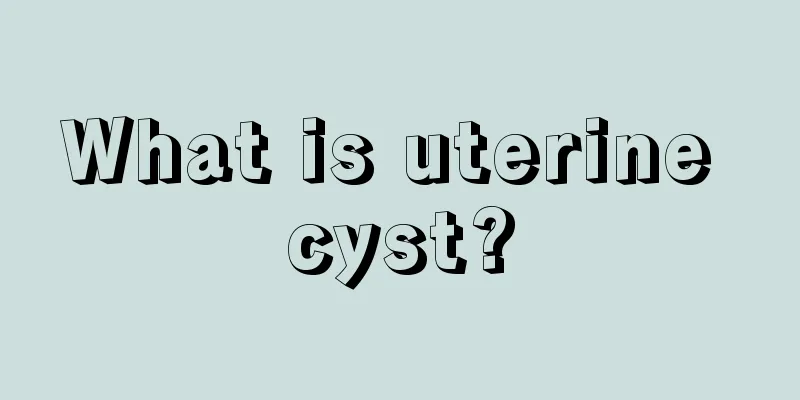What is uterine cyst?

|
Uterine cysts are also called uterine leiomyoma, which is the most common benign tumor. However, when facing this problem, we should also pay attention to scientific treatment, because it can easily cause vaginal bleeding or other adverse reproductive diseases. 1. Uterine cyst, also known as uterine leiomyoma, is the most common benign tumor of the female reproductive organ. Most of them are asymptomatic. A few of them present with vaginal bleeding, abdominal mass and compression symptoms. If pedicle torsion or other situations occur, it may cause pain, which is common in multiple uterine fibroids. The exact cause of the disease is unknown. Modern Western medicine uses sex hormones or surgery to treat it, and there is no other ideal treatment. Second, the treatment methods are as follows: 1. Opin suppository therapy: Opin suppository is also called α-interferon suppository (because its main ingredient is α-interferon). Usage: 2-3 days after the end of menstruation, the patient lies on her back before going to bed, and inserts an Aoping suppository into the posterior fornix of the vagina with a pusher. Do this once every other day, 6 times as a course of treatment, and recheck 2-3 days after the end of menstruation next month. Use the medicine together for 1-3 courses. Sexual activity is prohibited during medication. The total effectiveness rate reached 95.3%. It is easy to use and has few side effects. 2. Drug corrosion: Clean the surface of the cervix, protect the vaginal vault and vaginal wall with dry gauze, dip a cotton swab in 10%-20% silver nitrate or potassium dichromate solution, apply it on the eroded surface, and then wash repeatedly with saline. Apply the medicine 5-7 days after the menstruation is over, apply silver nitrate 1-2 times each time, 2-4 times as a course of treatment. Potassium dichromate should be applied once a month. These two drugs have strong corrosive effects and must be used in hospitals. Four methods of treating cervical cysts 3. Physical therapy: It is considered to be the best treatment method currently and is suitable for patients with moderate to severe cervical erosion. Methods include electric ironing, freezing, laser, etc. The doctor will choose the right treatment method based on the degree and area of erosion and the patient's general condition. It takes 4-8 weeks for the wound to heal. After the operation, pay attention to keeping the vulva clean and avoid sexual intercourse and bathing in a tub before the wound heals. 4. LEEP knife and coagulation knife radiofrequency ablation: This method can be chosen for cases with a wide range of erosions that have not healed after long-term treatment. It can cure the disease in one go, with little trauma during the operation and no scars left after the operation. It is currently the most advanced method. Choice of method: Because cervical erosion is closely related to the occurrence of cervical cancer, people suffering from cervical erosion should be actively treated. |
<<: Methods for postpartum uterine recovery
>>: When to do 3D color Doppler ultrasound? Two aspects to know in advance
Recommend
Is it normal for women to have inflammation?
As women age, they will experience some physical ...
What is the reason for short menstrual period and small amount?
We know that gynecological diseases are common am...
What causes melasma in women?
Chloasma is a very common spot that many people h...
Can I eat ginger when I'm pregnant?
Pregnant women can also eat ginger during pregnan...
What should I do if my menstruation is delayed after taking folic acid?
Folic acid is something that many female friends ...
Can I have sex if I have vaginitis?
After getting vaginitis, you should first go to t...
What if my period doesn't come for more than 20 days?
In daily life, I think most beauties know or have...
The top ten bad ways to wear leggings. Can you wear leggings often?
Although tight pants look good, they cannot be wo...
How long does it take to recover after a cesarean section?
Caesarean section is mainly some symptoms that ma...
Is it inflammation if the female private parts smell bad?
The female private parts are an area that require...
How long does it take for a woman to get pregnant after having her IUD removed?
Ten months of pregnancy is just to wait for the a...
Do you occasionally have sex during menstruation?
For some couples, it is a headache to have menstr...
My girlfriend's vagina is very loose
Vaginal relaxation in women is a very common phen...
Can I eat bananas during my period? Will it have any effect?
Bananas are a fruit that we are all familiar with...
What causes dark menstrual color?
Every female will gradually have her menstruation...









